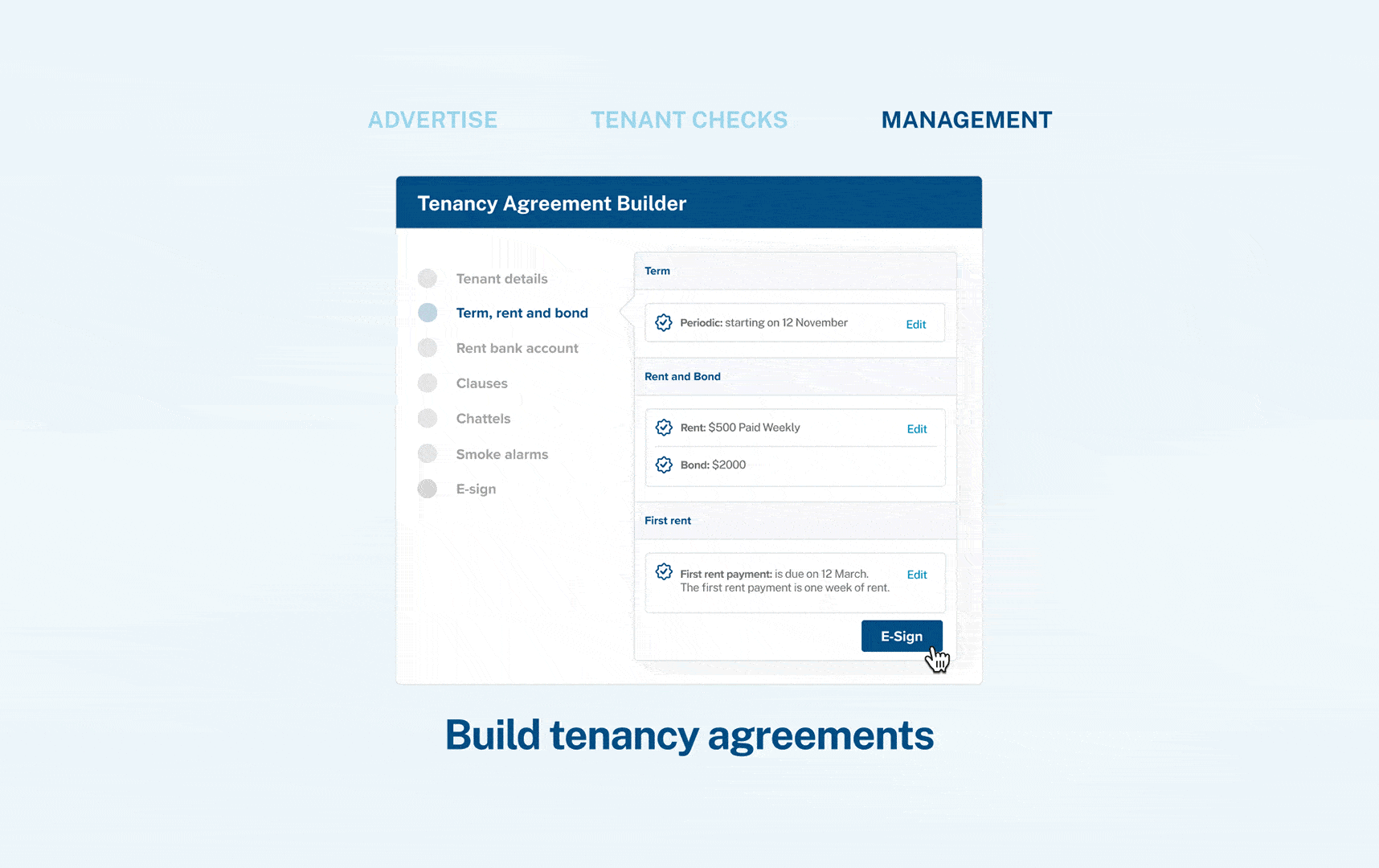What are the smoke alarm requirements?
From 1 July 2016, it has been compulsory for all rental properties to have installed, working smoke alarms.
Mandatory Requirements
Every rental property must meet the following requirements:
There must be at least one working smoke alarm within 3 metres of each bedroom door or every room where a person sleeps.
There must be at least one working smoke alarm in self-contained caravans, sleep outs, or similar structures.
There must be at least one working smoke alarm on every level of a multi-level or multi-storey home. This includes on every level of split levels.
Installing New Smoke Alarms
If you install a new smoke alarm after 1 July 2016, it must meet the following requirements:
The smoke alarm must be photoelectric.
The smoke alarm must have a battery life of at least 8 years OR be hard-wired.
The smoke alarm must be installed according to the manufacturer’s instructions.
The smoke alarm must meet international standards.
Read more about the Technical Requirements for Smoke Alarms
Working Smoke Alarms installed pre-1 July 2016
Provided that any existing smoke alarms installed before 1 July 2016 are working and they are in the required locations under the Mandatory Requirements (above), then they do NOT need to meet the requirements for new alarms installed after 1 July 2016.
When do pre-1 July 2016 smoke alarms need to be replaced?
Any smoke alarm, including pre-1 July 2016 alarms, must be replaced if or when:
- they stop operating or functioning correctly
- the alarm reaches the replacement date listed on it
- if there is no replacement date, when the alarm is more than 8 years old
- if you don’t know how old the alarm is
If you replace a pre-1 July 2016 smoke alarm, the new alarm must meet the requirements (listed above) for post-1 July 2016 smoke alarms.
Watch this helpful video from Tenancy Services for more information
Who is responsible for smoke alarms?
Responsibility for smoke alarms is shared by landlords and tenants. Landlords may be subject to fines of up to $7,200 and tenants of up to $4,000 for failing to meet their obligations.
Landlord’s Responsibilities
Landlords are responsible for ensuring that the property has smoke alarms that meet the requirements (above) at the beginning of the tenancy. This means that before the start of every tenancy the landlord must ensure that the alarms are working and meet the minimum requirements for location, type, and age.
Tenancy law gives landlords the right to enter their rental property after 24 hours notice for the purpose of complying with smoke alarm requirements. In this circumstance, entry must be made between 8am and 7pm.
Tenant’s Responsibilities
Tenants must do the following:
- Replace dead or dying batteries during the tenancy if the alarms have replaceable batteries.
- Notify the landlord as soon as possible if any smoke alarm becomes faulty or if there are any problems with the alarms.
- Avoid damaging, removing, or disconnecting any smoke alarm.
Choosing a Smoke Alarm - best practice from NZ Fire Service
The New Zealand Fire Service provides a helpful guide on choosing the right smoke alarm.
Read more from the NZ Fire Service about choosing a smoke alarm
Installing a Smoke Alarm - best practice from NZ Fire Service
The New Zealand Fire Service also provides a helpful guide on how to install a smoke alarm.
Read more from the NZ Fire Service about installing a smoke alarm
Helpful Resources and Further Reading
Tenancy Services: Smoke Alarms in Rental Properties
NZ Fire Service: Best Practice for Smoke Alarms
Tenancy Services: Smoke Alarm Technical Requirements Booklet
The information contained in this article is exclusively for promotional purposes. It does not in any way constitute legal advice and should not be relied upon as the basis for any legal action or contractual dealings. The information is not, and does not attempt to be, a comprehensive account of the relevant law in New Zealand. If you require legal advice you should seek independent legal counsel. myRent.co.nz does not accept any liability that may arise from the use of this information.




